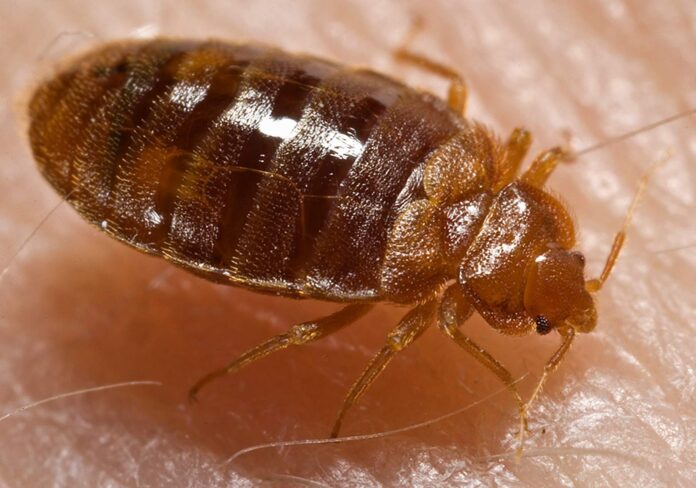Google trends data shows that 90,000 Brits are searching about bed bugs each month, as reports of infestations have increased by 65% in comparison to last year.
With the recent outbreak of bed bugs across the UK, Brits are starting to panic about the risk of infestations and getting painful, itchy bites. Hotels are becoming a particular concern due to the amount of visitors passing through and the fact that bed bugs tend to commonly inhabit furniture and bedding.
Rachael Kiss from Alliance Online, who supply insect control devices and a range of cleaning products, has provided her insight on the tell-tale signs of bed bugs and how to remove them should you be met with an infestation. She commented:
“The invasion of bed bugs in the UK causes a huge concern, especially knowing that the reported cases are growing by the day. Bed bugs have a lifespan of four to six months, and tend to spread rapidly so if you do not take action immediately, you can quickly find yourself with an infestation. Although it is recommended to seek professional pest control services, there are ways you can remove them yourself.”
What are the tell-tale signs of bed bugs?
“Due to bed bugs feeding on blood, the marks they leave on the skin are the most noticeable sign to be aware of. Bed bug bites are often red, itchy and appear as raised welts on the skin and are typically arranged in clusters or lines. The NHS states that bed bugs don’t tend to cause health problems, but it is still important to remove them as quickly as possible to prevent an infestation.”
How do I remove bed bugs?
-
Wash the affected fabric on a high temperature
“Hot water tends to kill bed bugs at all life stages (including eggs). Your first port of call should be to wash the affected fabric on the highest temperature it can tolerate (around 60℃ should be sufficient). It would be advisable to wash all fabric which has a close proximity to the affected area, as bed bugs tend to transport quickly. Opt for a large quantity of laundry detergent, as you may require a second wash to eliminate all signs of bed bugs. Ideally, use laundry detergent that contains bleach. If you have a dryer setting, dry the fabric with a high heat for around 30 minutes.”
-
Freeze the fabric!
“A high temperature wash tends to be successful in eliminating bed bugs but as an alternative, freezing also does the job. Gather your infested fabric and place them in a laundry bag or bin bag, making sure to remove as much air as possible to maximise the effect of freezing. Place the bags in the freezer for at least four days – it’s important that the temperature is 0℃ or lower. After the freezing period, inspect the fabric for any remnants. If it appears to be free from bugs and eggs, allow the fabric to thaw at room temperature and completely dry to prevent mould growth.”
-
Create a trap using double-sided tape
“Bed bugs are unable to fly and can only navigate by crawling. So, by simply using double-sided tape, you can trap them. Using a bed as an example, place a double-side of tape around the headboard or legs of the bed so that a sticky side is facing upwards. Anywhere the tape can be stuck, and the critters can travel onto is a preferred spot. Bed bugs will get stuck on the tape as they try to climb up or down the bed. Once done, it’s important that you dispose of the tape in an outside bin.”
-
DIY repellents
“While there aren’t many ways to completely prevent a bed bug infestation, there are natural ingredients that may help deter them from settling. Essential oils are a go to for deterring critters – they have been reported to have good repellent properties. The smell of lavender oil, peppermint oil and tea tree oil have been found to encourage the pests to leave. Plus, you may find you already have these in your cupboard. Dilute a few drops of your chosen essential oil with water and spray it on the infested fabric and repeat if needed.”
-
Hoover the mattress
“Hoovering the mattress has been known to be effective in removing bed bugs, especially if you work at a hotel that is experiencing an infestation, as it is fairly quick to do and doesn’t require washing and drying all of the bedding onsite. Make sure that your hoover has a HEPA filter, as this will help trap them. If your hoover doesn’t have one, consider using a vacuum bag to collect the bed bugs and the eggs. Start by clearing the area and hoovering the entire surface of the mattress, focusing on seams, crevices and folds. Opt for using the tools and brush attachments. After hoovering, immediately empty the bag or clean the canister and seal the contents in a plastic bag and dispose of it in an outdoor bin to prevent the bugs from escaping.”
Amid the recent outbreak in the UK, Alliance Online have released these comments to encourage Brits to act now to treat bed bugs.

| [donate]
| Help keep news FREE for our readersSupporting your local community newspaper/online news outlet is crucial now more than ever. If you believe in independent journalism,then consider making a valuable contribution by making a one-time or monthly donation. We operate in rural areas where providing unbiased news can be challenging. |



















